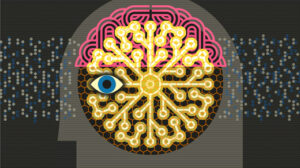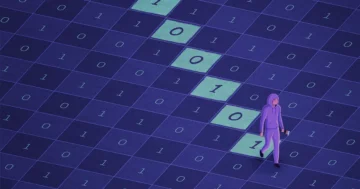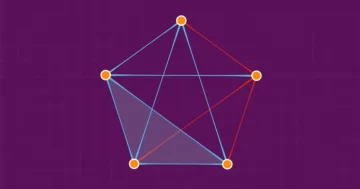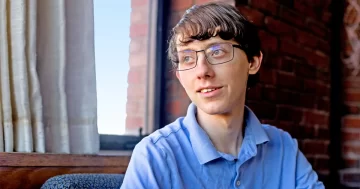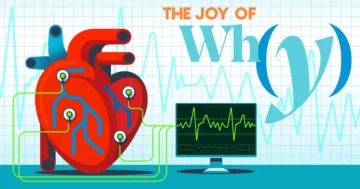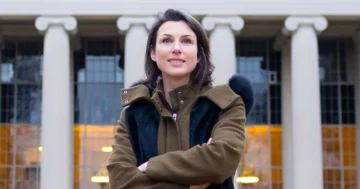
David Deutsch defined constructor theory as the theory of which transformations can or cannot be caused and why. I’m still struggling to understand how constructor theory provides the “why.”
First, let me clarify that whether you’re using constructor theory or using the current approach, we are just dealing with some guess as to what the actual laws are. And these guesses can always be wrong. But if you buy constructor theory, the key is that just conjecturing dynamical laws will be insufficient to capture all of physical reality. You need additional principles, given by constructor theory.
So I think David is stressing that constructor theory is not just a list of things that are possible and things that are impossible. It’s the explanatory theory of why a certain pattern of possible and impossible tasks best captures what we know at the moment about physical reality. Then, if you want to question that explanatory theory, you can. But the conjecture is that whatever explanation you would come up with to improve on that, it would itself have to be expressed in terms of possible and impossible tasks.
Would there be some primitive set of tasks at the bottom? For instance, in computation, from just a few basic logical operations, every other logical operation can be built. Do you imagine that there are a few basic constructors out of which all other constructors can be created?
In short, yes, though this is something that we haven’t really developed yet. John von Neumann, the great physicist and mathematician, conjectured a machine that was supposed to be more general than Turing’s universal computer. Von Neumann called it a universal constructor. He realized that if you think of some tasks that, for instance, living systems can do, like creating copies of themselves, a universal Turing machine cannot do that. My Mac cannot create another Mac out of some boring raw materials, even though I wish it could!
So von Neumann asked: What do I have to add to a Turing machine for it to become a more powerful machine that could construct itself? It turns out you have to add a number of things: a set of implements that allow the machine to grab the raw materials and assemble them, the ability to read instructions for assembly, et cetera.
The universal constructor is an analogue of the Turing machine in the sense that it’s supposed to be able to perform all physically allowed tasks. And we don’t know if one is possible under the laws of physics that we have. And the reason we don’t know, even 70 years after von Neumann first suggested this, is that nobody took the original proposal and connected it to physics.
Once constructor theory can define the universal constructor in physical terms and understand the principles that allow you to say that the universal constructor is possible, then we will have an answer to your question — we’ll know what are the elementary gates or elementary possible tasks that the universal constructor can appeal to when it’s trying to perform a complicated task.
Usually we think that you start with fundamental physics and then develop technology as an application of those ideas. This almost seems to go the other way around — you start with the possibility of a technology, and that leads you to fundamental physics.
I think this is really cool. By studying the properties of something that sounds very technological — like a computer or a constructor — you end up actually studying the deepest features of the laws of physics. It’s something that fascinated me when I started studying quantum information.
Initially I thought quantum information is just some quirky application of quantum physics to computer science — but it’s not true. It’s the best tool we have to understand quantum theory itself. Measurement, EPR, entanglement: All of these things that were very puzzling even to the founding fathers of quantum theory have been worked out properly by people working in quantum information, and at the same time they were working out how to build a universal quantum computer.
It’s very cool that you can do something that’s very useful in technology, like cryptography, but at the same time you’re studying the foundations of entanglement and superpositions and so on. In constructor theory, we’re trying to follow the same kind of logic to an even more general level.
So the technology that could come out of constructor theory would be something like an all-purpose 3D printer, capable of constructing any physical object, including a copy of itself. That’s a universal constructor.
Yes.
Would a universal constructor also be a universal quantum computer? Or would it just have to be able to 3D-print universal quantum computers?
It’s more fruitful to think in terms of repertoires of a given programmable machine, where the repertoire is the set of tasks or transformations that the machine can perform when given the appropriate input program. In that sense, being a quantum computer or being capable of building a quantum computer given sufficient materials are essentially the same thing — because once a machine can build another machine, then the first machine has the second one’s repertoire in its own repertoire. The universal constructor has all the physically allowed computations in its own repertoire, which means it is a universal computer, too.
And the universal constructor could even output living systems?
Yes. The physics of life would be considered a subpart of this more general theory of the universal constructor. And you could imagine how a better understanding of the constructor-theoretic foundations of the laws of physics could give you ways of programming the universal constructor to perform tasks that are relevant to that field.
So for instance, for quantum biology, you could think of the universal constructor as being programmed to mimic what happens in a plant cell when photosynthesis occurs and then thinking of ways of improving on that. You can imagine all sorts of programmable nanomachines that are specific instances of the universal constructor programmed for specific tasks. And underlying all those should be this set of principles that we will uncover by studying constructor theory. That’s the vision.
So a universal constructor could construct a living system, but a living system itself is a kind of special-purpose constructor?
DNA is a replicator and contains the instructions for building the cell, and then the cell is the vehicle which is capable of reading those instructions, constructing a new instance of itself, copying the instructions and inserting them into the new cell. And in constructor theory you can explain why this is the only viable mechanism possible if you want reliable self-reproduction, under laws of physics that aren’t especially designed for life. So it’s not just that it’s one of the ways life can work under our laws of physics, but it’s the only way it can work. That’s a feature of living systems regardless of whether they are built with the chemistry we have on Earth.
Ultimately what we need is a theory of what makes life distinct from nonlife, and so far there isn’t a quantitative, predictive answer. What are the laws underlying this phenomenon? What’s lacking isn’t the biology — the biologists have already done their job; they’ve worked it out beautifully with evolutionary theory. Now physicists need to solve the problem within the boundaries of fundamental physics. And I’m hoping constructor theory can provide the tools to tackle that problem.
- 3d
- Additional
- appeal
- Application
- around
- BEST
- biology
- build
- Building
- buy
- caused
- chemistry
- computer science
- computers
- Creating
- cryptography
- Current
- dealing
- develop
- Explanatory
- Feature
- Features
- First
- follow
- Gates
- General
- grab
- great
- hoping
- How
- How To
- HTTPS
- Including
- information
- IT
- Job
- Key
- language
- Laws
- Level
- List
- mac
- materials
- Operations
- Other
- Pattern
- People
- Physics
- Program
- Programming
- proposal
- quantitative
- Quantum
- quantum computers
- quantum physics
- Raw
- Reading
- Reality
- Science
- sense
- set
- Short
- So
- SOLVE
- start
- started
- system
- Systems
- Technology
- Thinking
- time
- turing
- uncover
- Universal
- vehicle
- vision
- within
- Work
- working out
- years

